
The Akrotiri Peninsula, located east of Chania, sticks out of the north coast of Crete like a cauliflower floret. This hilly strip of land offers breathtaking coastal scenery that’s an ideal backdrop for those who want to squeeze in a short hike. Afterwards, you can even sample some local wines at a famous winery. How’s that for a post-hike reward?
Before arriving in Chania, I had no idea how many hiking opportunities are within proximity to the city, and that’s one of the reasons why I fell in love with Chania (along with the Cretan cuisine, of course). While I didn’t have time to do the hike through Samaria Gorge, the largest gorge in Europe, this trail is a fabulous alternative, taking in a wealth of diverse views and a few curiosities to boot.
Hike highlights:
- Gouverneto Monastery
- Arkoudospilio Cave (Bear Cave)
- Katholiko Monastery
- Katholiko Bay
- Agia Triada (Holy Trinity Monastery)


Gouverneto Monastery
Once you park up at Gouverneto Monastery, take a stroll around if it’s opened. Built in 1537, it’s one of the oldest monasteries in Crete.
Visually speaking, it doesn’t quite sparkle like Agia Triada (Holy Trinity Monastery), but this adds a rustic charm to the monastery’s appearance. Its sprawling size and architectural features such as towers on each side hint to its original importance.
The building of the monastery began during the Venetian Era, but construction halted when the Turks invaded Crete and refused the building of Christian places of worship. Astonishingly, it would take two and a half centuries to see its completion.
Once a home for up to 600 monks, and later a guardhouse for Germans during WWII, Gourverneto Monastery has secured its place in Cretan history.
Arkoudospilio Cave (Bear Cave)
There’s a well-marked path from the monastery to your next port of call – Arkoudospilio Cave. This section is approximately 1 km, and from the get-go, you are greeted with exceptional views. Keep your eyes peeled for the Cretan wall lizard, I was lucky to spot one with a wonderfully green tail.


Staring out from the rugged terrain, all you will see is clear blue skies and the endlessly blue sea that stretches far out into the horizon.
After little less than 20-minutes walking down the winding path, a stone ruin appears jutting majestically out from the trail to mark the entrance of the cave.


Walk behind the ruin and you will find the opening to the cave. What lies inside is nothing short of extraordinary. The cave opens up to showcase an enormous cavern filled with spectacular stalagmites and stalactites.

It’s a magical vision, like something straight out of Werner Herzog’s The Cave of Forgotten Dreams. After watching the documentary a few years back, I’ve fantasised about finding such caves. The focus of the documentary features around Charuvet Cave in south east France. Discovered in 1994, it contains some of the best-preserved figurative cave paintings in the world.
Among one of the important findings at Charuvet Cave was fossilized remains, prints, and markings from a variety of animals, some of which are now extinct. Among the markings found were paw prints by cave bears, which brings me back to Arkoudospilio Cave that also goes by the name Bear Cave – fittingly named after one of the bear-like rock formations that dwells inside.

Local legend at Arkoudospilio Cave
Local legend has it that the Virgin Mary turned a bear that was stealing the water of the monks living nearby into stone.
Archaeologists believe that this bear cave was used as early as Minoan times as a sacred cave. Today, people still gather for celebrations in the cave, spending the night there and lighting fires. The ceiling is blackened by the smoke from these fires.
Katholiko Monastery

After another 10 – 15 minutes of hiking, descending further into the gorge, you’ll reach the ruins of the Katholiko Monastery and the cave of Saint John the Hermit who lived here in the 14th Century. It is believed it was abandoned sometime in the 17th Century due to the repeated attacks by pirates.
Saint John the Hermit, along with 98 other Holy Fathers, became known for their abilities to cure sickness, however, when popularity of their miracle work began to spread, their leader, John, retired to this cave to live in solitude. It’s here in the wilds of Avalaki Gorge that he was accidentally fatally injured by a hunter. To honour John, a chapel was constructed at the entrance of the cave, and he was honoured a saint in the 16th Century.
Additionally, during the WWII Nazi invasion many Cretans who fought in the Battle of Crete hid in the monastery and it’s surrounding caves.
I told you this hike had many twists and turns, and I don’t just mean the path that you’re walking on!
Katholiko Bay
Unfortunately, we didn’t have time to go to the bay (sad, I know!) as it looks super beautiful. Remember, I said that you can visit a winery for a post-hike glass of wine? Well, we had a wine-tasting session at Agia Triada booked which we needed to scurry back for.
Those who wish to visit Katholiko Bay can descend into the gorge via the bridge and continue hiking down to the sea for around another 20 minutes.
Agia Triada (Holy Trinity Monastery)

Once we turned back and retraced our way to the beginning of the trail head, we hopped in our van to our last port of call. Now, we were going to enjoy a spot of wine-tasting at the beautiful Agia Triada monastery located just 4km away.
The monastery is still an active monastic community, with monks living and working within its walls. The monks are dedicated to the preservation of the monastery’s religious and cultural heritage. To bring in an income they produce of high-quality organic products, including olive oil, wine, honey, and vinegar. These products are made using traditional methods and can be purchased in the monastery’s beautiful shop. This offers a unique opportunity to take home a piece of Cretan tradition.
The grounds of the Agia Triada are well worth visiting, whether or not you decide to indulge in a spot of wine-tasting within the cellars. The building itself is beautiful and incredibly well-maintained. There’s a small museum that showcases old-fashioned methods of wine producing and the adjoined shop is a superb place to pick up an array of local produce.
I picked up a bottle of olive oil and balsamic vinegar. Needless to say, I’ve been liberally applying them to all my salads since I’ve arrived back and I can certainly taste the difference. The real mark of quality is truly noticeable when it elevates a humble loaf of crusty bread.
When it runs out, I’ll be sad. I guess I’ll have no other choice but to return to Crete, right? Additionally, I’ll be sure to leave enough time that I make it all the way down to Katholiko Bay. So many reasons to return!
Don’t forget to pack…
- Drinking bottle – there are no shops or drinking taps along the way, and it can get very hotel so err on the side of caution by packing at least 1 litre of water per person.
- Sunscreen and reapply when necessary.
- Suitable footwear with good grip. I wear hiking sandals from Teva which I highly recommend.
- A few euros to pay the 2.5 Euro entrance fee at the beginning of the hike.
Planning a trip to Crete?
How to get there: I flew into Chania with Jet2 from London Stansted Airport. They also depart from a range of airports so I recommend looking at their flights to Chania to find out which airport is closest to you.
Transport: I recommend hiring a car if you want to explore the surrounding nature of Chania.
During my trip to Chania I was hosted by Jet2 and Chania Tourism Board, however, all thoughts and opinions are my own.


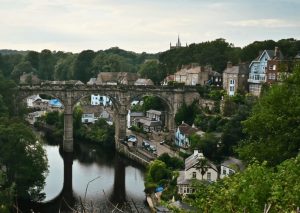
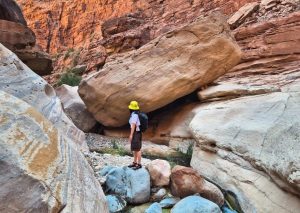
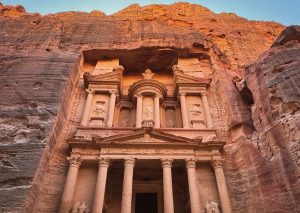

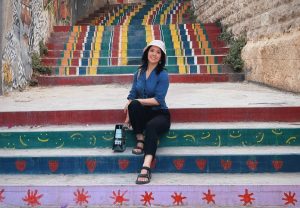
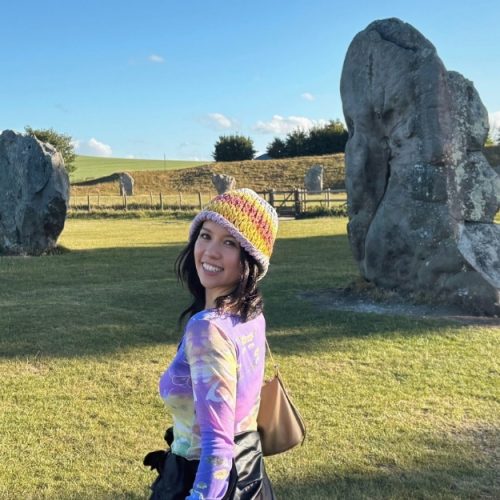
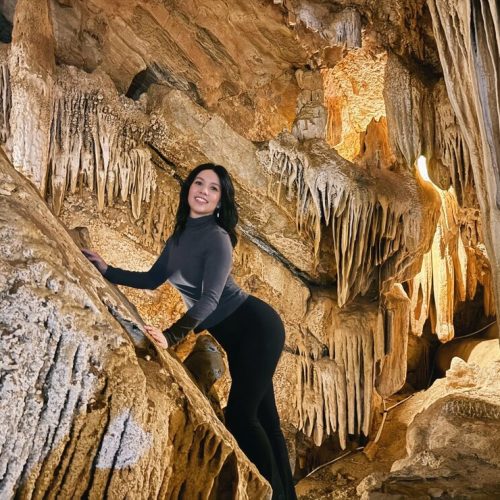
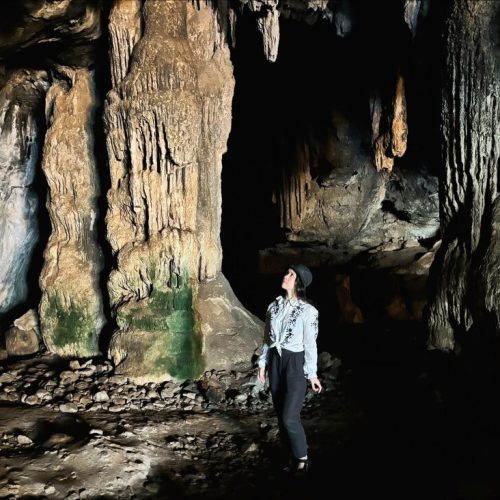
One Response
Thanks for sharing this detailed guide to the Akrotiri Peninsula and its hiking trail! Your description vividly captures the allure of this hike and the rich history of the area.
It’s fantastic how you weave together the natural beauty of the landscape with the fascinating historical and cultural context. From the rustic charm of Gouverneto Monastery to the striking formations in Arkoudospilio Cave, your narrative brings the experience to life. The historical anecdotes, especially about Saint John the Hermit and the WWII connections, add depth and intrigue to the hike.